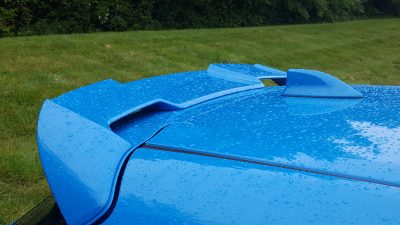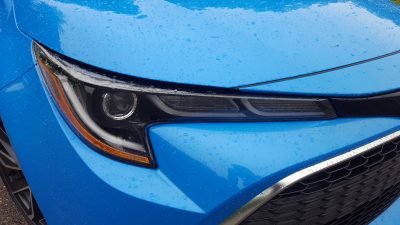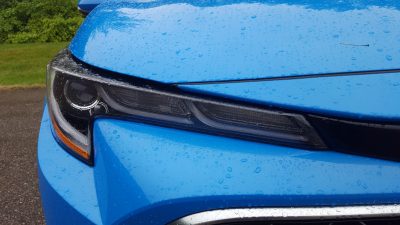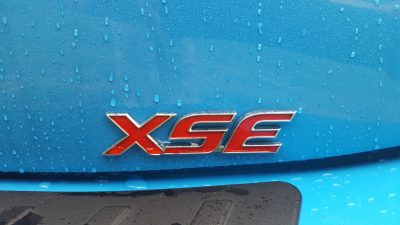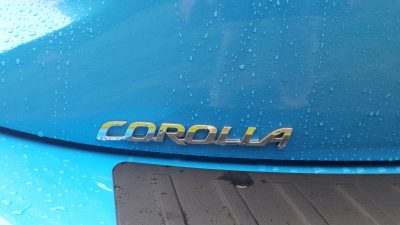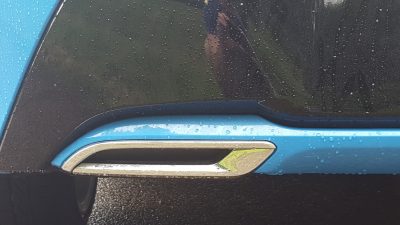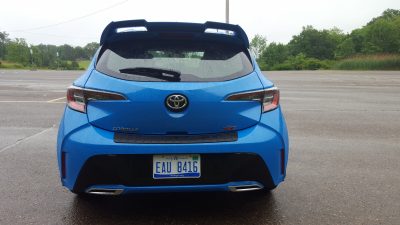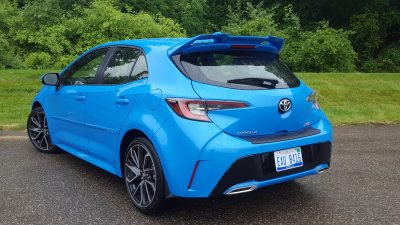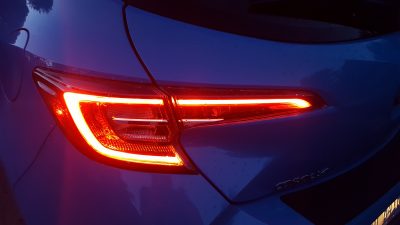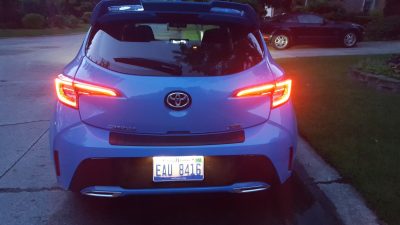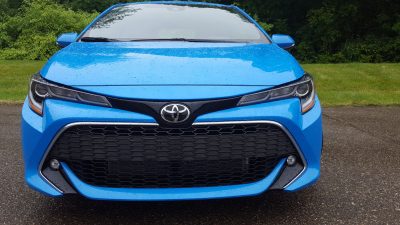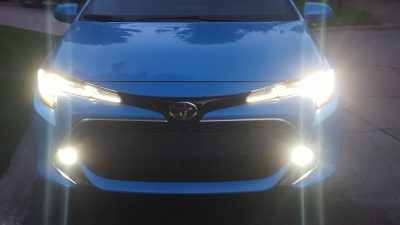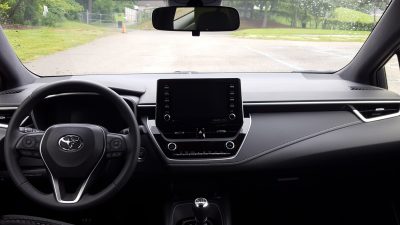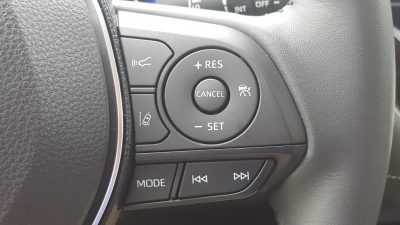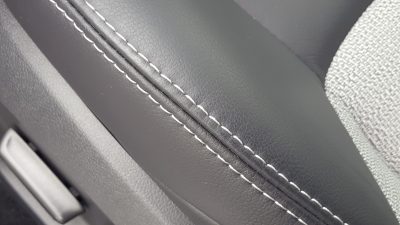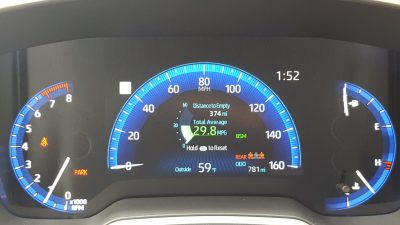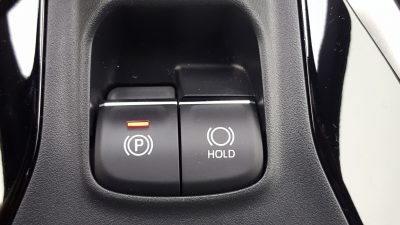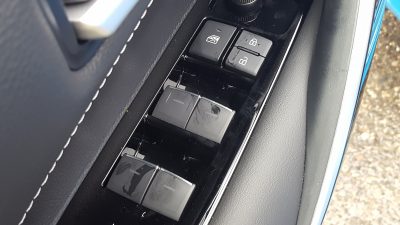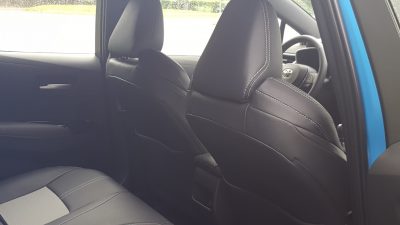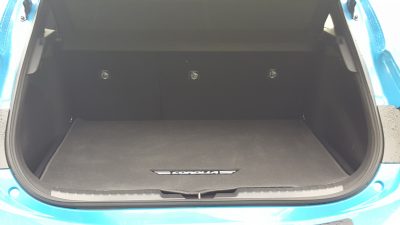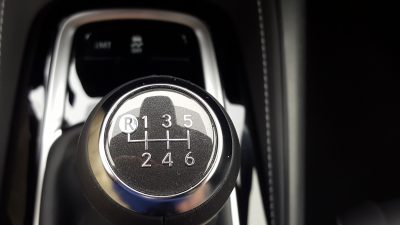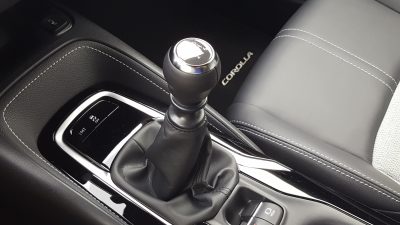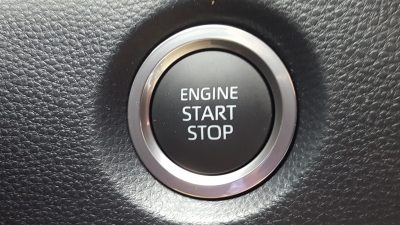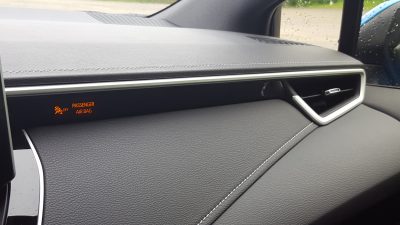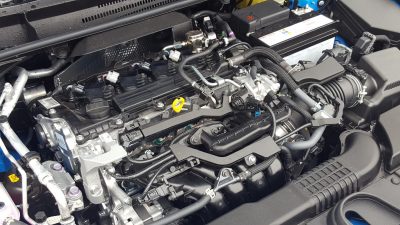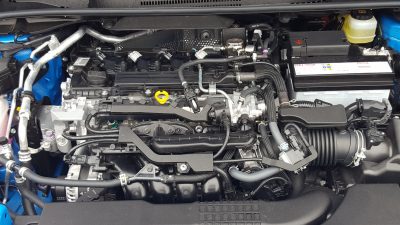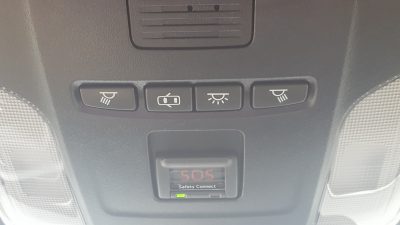When it comes to the venerable Toyota Corolla, the iconic compact sedan has developed a very loyal following during its several decade production run, and it has managed to even block the challenge to its sales supremacy that has been cast into stone by a growing field of CUV competitors. But while the Corolla has managed to check all the other boxes that car buyers think in their minds when they purchase one, the lone item that has been missing in recent years is excitement. So when Toyota revealed that it planned to release a five-door version of its econobox, the Initial D fan in us perked its ears in eager interest. But can the 2019 Toyota Corolla Hatchback indeed be the savior that can bring excitement back into the Corolla family, or is it a classic case of “don’t judge a book by its cover?”
Finally An Exciting Corolla:
When one looks at the exterior styling of the Corolla hatchback, it certainly does a good job of drawing attention to itself. Unlike the sedan which is about as bland and tepid as a glass of water, it’s clear that the hatchback variant snuck in a few cans of Monster energy drinks behind the backs of Toyota engineers. The overall motif here is very playful, with Toyota designers adding in plenty of attention grabbing creases, angles, and a sporty profile. The front fascia still looks like it was inspired by something that was found at the local fish market (despite its slicker headlights,) but it’s the rear fascia where things really get turned up a notch.
The subtle whiff of older Mazda 3 and even Vauxhall Astra influence is no accident, with our Blue Flame hued tester featuring a tidy roof mounted spoiler, sharp taillights, and a decently shaped rear bumper. Our car even came with a set of stylish albeit faux exhaust tips that lend further credibility to its sport tinged mission. On that front, we recommend that buyers looking to add one to their garage should stick with the range topping XSE version, which is mostly due to its bigger wheels (versus the smaller hoops on lower grade Corollas) as well as the way this particular trim helps the Corolla standout against rivals such as the Volkswagen Golf, Mazda 3, and the Honda Civic hatchback.
While the hatchback does not quite match the legendary AE86 Corolla that helped define 1980’s Japanese car culture, it is very close, and in some ways, it brings its own distinct flavor to young buyers. We hope that Toyota designers will eventually bring some special editions to the hatchback to help maxmimize its aesthetic impact, especially in XSE guise.
A Cabin That Needs More Sport:
With all the sport filled goodness that defines the exterior of the Corolla hatchback, the interior is decidedly more restrained, and lacks some of the exterior’s bold mojo. The look here is very clean and functional, with Toyota designers paying very close attention to the materials used. While it lacks some of the design flair that defines the Mazda 3 and the pure quality look of the Volkswagen Golf, the cabin did manage to lure us into its sweet embrace after spending extensive time in it. The well bolstered seats in our XSE grade tester are wrapped in a handsome leather/fabric combination, and they even offer heat for the front occupants. The driver also gets eight way power adjustment, but we wish that Toyota could’ve been more daring with select elements of the design. For example, XSE models feature a 7.0 inch digital instrument cluster screen, and while it does a good job delivering the essentials, we wish that it had more flexibility in being set to accommodate a wider range of drivers. One such change we would like to see is the option for a sportier screen motif, as well as less steps for select configuration setups.
An 8.0 inch dashboard mounted touchscreen helps control the latest iteration of Toyota’s Entune software, and while Android Auto is still annoyingly absent, Apple CarPlay finally makes its way to the system for 2019, which is a nice change from a company that once defiantly shunned both operating systems in favor of promoting its own domestic software. The system itself is very easy to use, and we noticed little lag when accessing various menus and functions. It is a leg up over the infotainment system in the Honda Civic, but the lack of Android Auto does cause the Corolla to miss a step in the technology front.
While the front seats are certainly a step above the mark in terms of comfort, the rear compartment is decidedly less generous. Unlike the Corolla sedan which features very good amounts of rear legroom, the hatchback’s shape causes legroom to be more reminiscent of the Golf. This tight space could cause passengers on long journeys to feel claustrophobic, but buyers that don’t haul a lot of rear passengers can do what we did, and fold down the 60/40 split folding rear seats to help maximize the amount of cargo space available.
Where’s The Beef?
Toyota likes to call the 2.0 liter four cylinder engine in the Corolla hatchback “Dynamic Force” alas, after spending time with this engine out on the road, the Corolla’s performance hardware is neither dynamic nor forceful. Toyota has been one of the few companies that has not fully embraced turbocharged powerplants, and while the 168 horsepower on hand is over 30 horsepower better than the 1.8 liter that powered the old Corolla iM and is also within firing range of the 170 horsepower turbocharged 1.8 liter in the VW Golf, the ambitious figure is very deceptive in practice. For starters, the Corolla’s torque figure caps out at 151 lb-ft of torque versus the 199 lb-ft of torque in its German rival, and while the company’s commitment to naturally aspirated engines is very commendable, it simply lacks the snappy thrust that only a turbocharged four cylinder can provide. It’s a shame, since the engine fails to cash the checks that its shouty exterior styling writes when viewed by casual observers. This is especially apparent when merging onto freeways, with the 2.0 liter feeling anemic when asked to put its full effort into the act.
Both manual and automatic gearboxes are offered in the Corolla hatchback, but our tester thankfully (and perhaps mercifully) arrived with the six speed manual gearbox. The manual here is a very smooth shifting unit, and is a marked improvement over the prior transmission that used to define older iterations of the Corolla. Fourth gear in particular can be considered a direct drive gear, with its 1.025:1 rating, and fifth and sixth gear being overdrive gears for freeway cruising. The manual is also the only way the engine can be used to its full potential, with acceleration in the lower gears being far better in city driving than what we have experienced in the optional CVT. Like sportier car offerings, the Corolla hatchback offers a unique rev matching feature to help smooth the transitions between gears when rowing up or down through the gear map. The system does make a difference, but more discerning buyers hoping for a precise rev matching experience will not find it here, with the system still letting a few shudders transmit through the car on select occasions.
Handling in our tester was also decidedly more precise than its sedan counterpart, with Toyota perhaps finally getting the hang of electrically operated steering. Feedback here is very quick and sensitive, with the hatchback delivering very communicative steering that does an admirable job telegraphing road conditions and wheel placement to the driver. It still cannot quite match the dance moves wielded by the Volkswagen Golf, but this effort is perhaps the closest we have seen the Corolla match that particular benchmark. The amounts of solidity that are present help the Corolla have a high degree of composure, and if it weren’t for the gutless engine, the Corolla would be a very tempting performance bargain. As it stands, it’s a very entertaining car that likes to take its time and be driven slowly. We hope the addition of a turbocharged engine or even some minor tweaks to the current engine in the near future can help balance things out more for the Corolla hatchback because it does have a lot of potential baked into its platform.
Value Quotient:
Like other budget focused offerings the Corolla hatchback is expected to play the value card, and on this particular front, the hatchback passes with flying colors when it’s pricing ladder is taken to consideration. Base SE models start at $20,140 with various accessories having the potential to help push the price past $25,000 when fully equipped. Buyers that choose to instead jazz things up with XSE models like our tester will be asked to pay the slightly higher $23,140 base MSRP. Choosing between the manual or CVT is a no cost affair, with our lightly optioned tester boasting a final asking price of $25,686. This included the $415 Adaptive headlight package, as well as several minor accessories such as the $375 rear window mounted spoiler, the $229 carpet mats package, and the $239 body side moldings. An interesting exception rears its ugly head when one tours the color palette for the XSE, with the visually attractive Blue Flame hue currently unavailable as of this writing. We suspect that it is due to a possible supply issue, but we will be reaching out to our local Toyota dealer for more information, and will update here accordingly when we receive a response.
In the meantime, the Volkswagen Golf is slightly more expensive than the Corolla in both S and SE guise, but it makes up for it by offering more standard equipment, and the 1.8 lter turbocharged four cylinder even offers a power advantage over the compact Toyota. The optional eight speed automatic also gives it an edge over the Corolla’s CVT, but the Golf does get noticeably more expensive than the Corolla when fully equipped thanks to its bigger options list.
Along with its German rival, the Corolla also faces a challenge from the Honda Civic hatchback which also aims to bring a bit more sport to the Civic lineup for those that cannot quite afford to make the jump to either the Si or the Type R. The base Civic hatchback is slightly pricier than the base Corolla SE, but the 1.5 liter turbocharged four cylinder makes more power than the Toyota’s naturally aspirated four banger, and the Sport variant ups power a bit more to 180 horsepower. The Honda also offers a higher suite of standard equipment, and boasts an even bigger options list than the Corolla. Like the Volkswagen, the Honda also uses a turbocharged powerplant, and its appearance does further highlight the feeling that the Toyota is on the outside looking in when it comes to being one of the few naturally aspirated offerings left in an increasingly turbocharged world.
That said, the 2019 Toyota Corolla certainly brings a breath of fresh air to not only the Corolla model family, but also to Toyota’s broader lineup as a whole. With the Toyota Supra representing the pinnacle of the Japanese auto giant’s performance lineup at the moment, The Corolla hatchback will be expected to appeal to younger value focused enthusiasts. We look forward to seeing how much further the Corolla hatchback can go, especially when certain upgrades and mid-cycle updates are added to the equation.

Carl Malek has been an automotive journalist for over 10 years. First starting out as a freelance photographer before making the transition to writing during college, his work has appeared on numerous automotive forums as well as websites such as Autoshopper.com.
Carl is also a big fan of British vehicles with the bulk of his devotion going to the Morgan Motor Company as well as offerings from Lotus, MG, and Caterham. When he is not writing about automobiles, Carl enjoys spending time with his family and friends in the Metro Detroit area, as well as spending time with his adorable pets.


